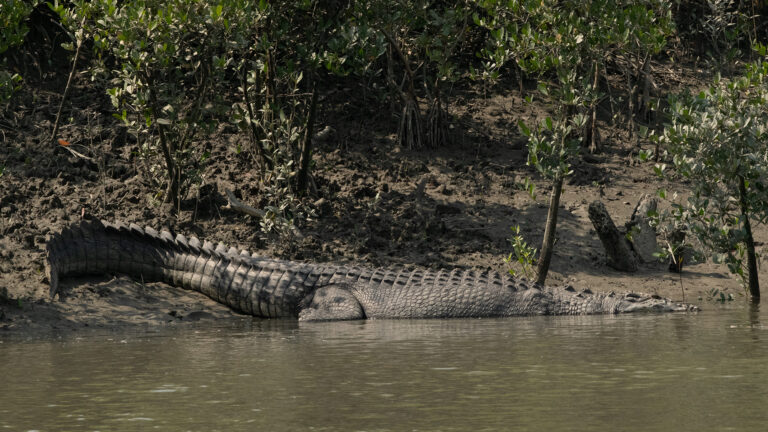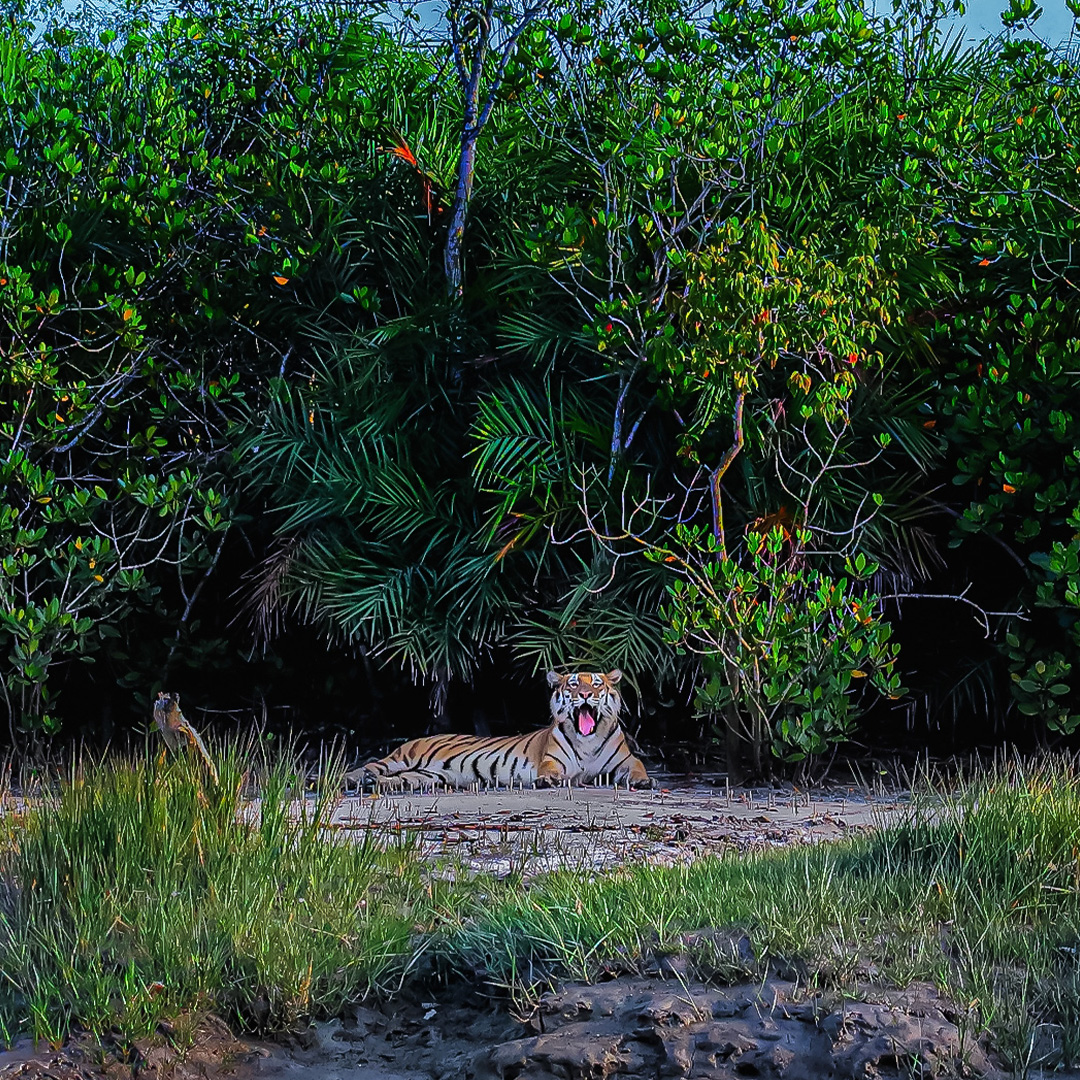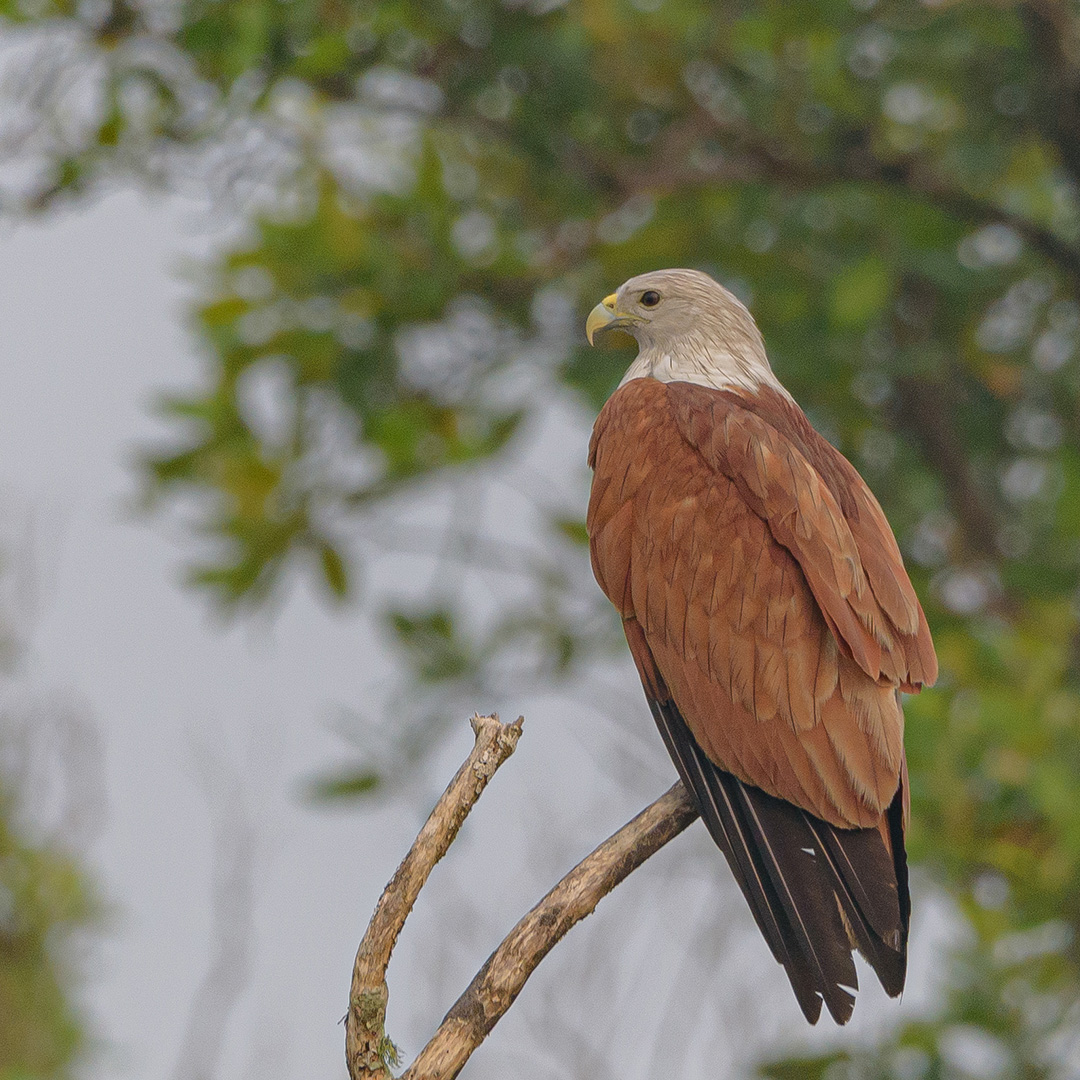

Enchant in the nature’s beauty in Sundarbans national park with your family and your loved ones. The experience in Sundarbans national park will kick back the best times in your life. When you think of a moment to get outdoors, you can hit this national park and enjoy the exquisiteness of Sundarbans boat safari. The local trails here will make you appreciate the wonders of nature. You can feel the nature’s ever-present feeling when you enjoy the delta formed by the Ganga and the Brahmaputra. The Sundarbans national park is named after the special type of Mangrove trees ‘Sundari’. The nature is here to present you endless bounty. When you live in these regions of nature, you will feel the renewal of your spirit. The Sundarbans Park covers the buffer zone of around 885 sq.km and the River Matlain on the West, river Haribhanga on the East, with Netidhopani and Gosaba in the North borders of the core areas of the park. There’s a whole world out here for you to explore! Never miss out the ‘Royal Bengal Tigers’ in the Sundarbans national park. Let’s preserve and cherish the UNESCO accredited world heritage site here in the national park. In the year 1977, this forest was declared to be the wildlife sanctuary and one of the core tiger reserves in the world. You will surely rejoice like a child when you visit this place and make the jungle boat safari trip out of it!
The world is always better here! The beauty of the earth will be contemplated by watching the land of majestic “Royal Bengal Tigers”. There are watch towers in Sundarbans that provides an opportunity to enjoy the regal activities of the tigers. The other jungle inmates of Sundarbans are Monitor Lizard, Estuarine Crocodile, Leopard Cats, Wild Boar, Jungle Cat, Fishing Cats, Chital, Dolphin and many more. There are about 248 bird species in Sundarbans National Park namely Black-hooded Oriole, Mangrove Whistler, Cinnamon Bittern, Swamp francolin, Grey-headed fishing eagle, Brown fish owl, Osprey, Purple Sunbird, Pale-billed Flowerpecker, Loten’s Sunbird, Striated Babbler, Striped Tit-Babbler, Brown-cheeked Fulvetta, Lemon-rumped Warbler, Brown-winged kingfisher, Purple heron, egrets, Asian open bill stork, Greater adjutant stork, Black-capped kingfisher, Asian dowitcher, Northern eagle owl, Common Woodshrike, Gull-billed Tern, Common Flameback, Fulvous-breasted Woodpecker, Peregrine falcon White-collared kingfisher, Northern Pintail White-bellied sea eagle, White ibis, Black-necked stork, Green-backed heron, Pallas’s fish eagle, Scaly-breasted Munia, Tree Pipit, Yellow Wagtail, Baya Weaver, House Sparrow, Purple Sunbird, Pale-billed Flowerpecker. A large number of migratory birds visits the park in winter months namely Green Pigeons, Sand Pipers, Large and Small Spoonbills, Darters, Herons, Egrets, Cormorants, Storks, Seagulls, Teal, Partridges are some of them. Just comprehend and wear the colours of spirit while watching the fauna during the Sundarbans jungle safari!
This is the best part to be explored! In the Sundarbans national park, you have the exclusive mangrove vegetation of Sundarbans to see. Flora in the Sundarbans region includes Sundari,Gewa, Goran, Kewra. The serene delta land of Sundarbans surrounded by rivers and comprised of beautiful floral range makes it an attractive destination for both wildlife enthusiasts and nature lovers to adopt the pace of nature.

When you are going for a safari in the Sundarbans national park, only boat safari is the option to explore the wilderness. There are variety of boats available including AC and Non-AC cabins below the deck, in addition to the restrooms and changing rooms. Also, enjoy the Bengali meals during the boat safari.
One of the renowned watch towers in the park is the Sajnekhali Watch Tower and it is a prime entry point too. The reason behind its popularity is this place also serves as the head office of the forest department and close to the number of resorts in Sundarbans area. The permission to enter the park premise can be obtained from this area only. The capacity of the watch tower is to accommodate 20 people at a time. The major attraction of this watch tower is opportunity to explore the wilderness from close vicinity. Especially, it is the stupendous site for bird lovers. Pelican, Kingfishers, Plovers, Lap Wings, White Bellied Sea Eagle, Whimprel, Curfews, and Sandpipers are frequently seen in this area.

Your journey to the watch tower will act as the one of the essential facts of life, due to the presence of nature. This watch tower is the prime spot for tiger sighting. The watch tower can accommodate 25 people at a time. There is a waterbody behind the watch tower, which is the main water resource for the majestic inmates and other wild animals to quench their thirst. There is vast grassland behind the pond which is the site of the native wildlife.

A wonder in a vast edifice is what you can enjoy when you go for this jungle safari in Sundarbans national park. This watch tower offers the exclusive exposure of canopy walk to the tourist to explore the magnificent flora and fauna of ‘The Sundarbans’. It is at an elevation of 20 ft and about half a kilometre stretch. Along with tigers, tourists may also spot other various wildlife species such as Chital Deer, Brahmini Kites etc.

Nature has revealed us a lot of things, and one of them is the place here to visit in this Sundarbans national park. This watch tower is related with the legendary mythological tale of Lakhindar and Behula. It offers a spectacular view of the ruins of a 400 years old Shiva Temple. This watch tower can accommodate 20 persons at a time. It also has a sweet water lake in close proximity, which is the grazing site of several wild animals.
When you look into the details of nature, you can enjoy it’s beauty. Sundarbans National Park has a tropical climate. Boat safari starts at sunrise and ends at sunset. The months April till June is very hot and humid, with the high temperature that ranges from 30 to 42 degrees Celsius. The winter season starts from October till March, and it is the best time to visit Sundarbans National Park. During this season the climate is soothing and the temperature ranges between 10 degree to 25 degree Celsius. It is the best time to visit the national park. “This is one of the ideal essence for your existence”
Experience paradise at our resort – check it out!
[wpforms id=”16622″ title=”false” description=”false”]
[wpforms id=”13932″ title=”false” description=”false”]